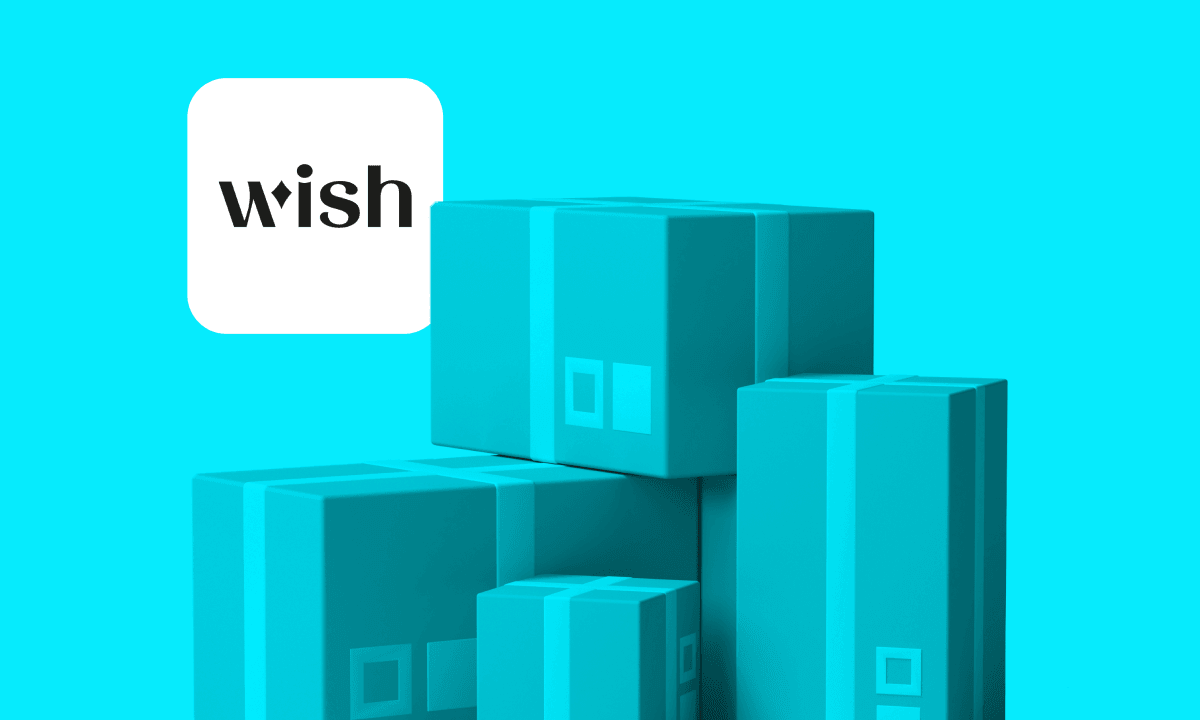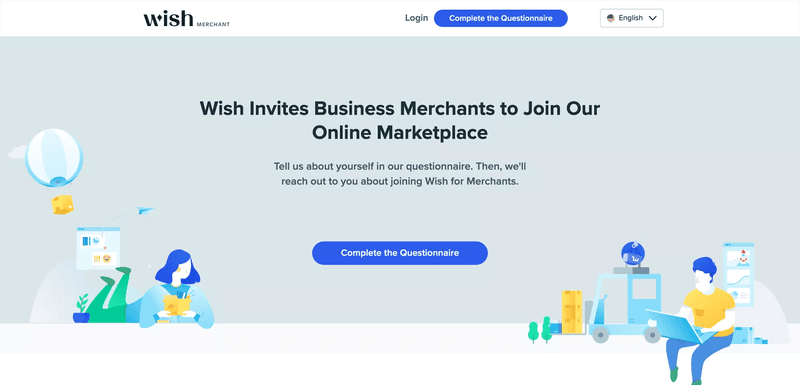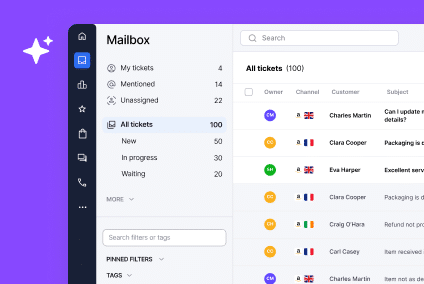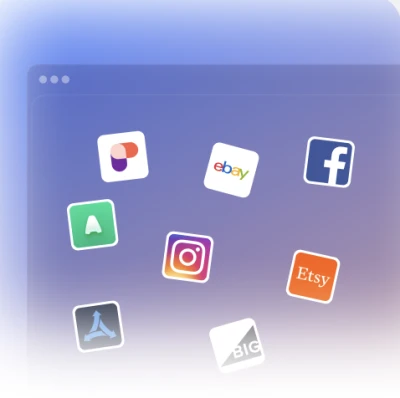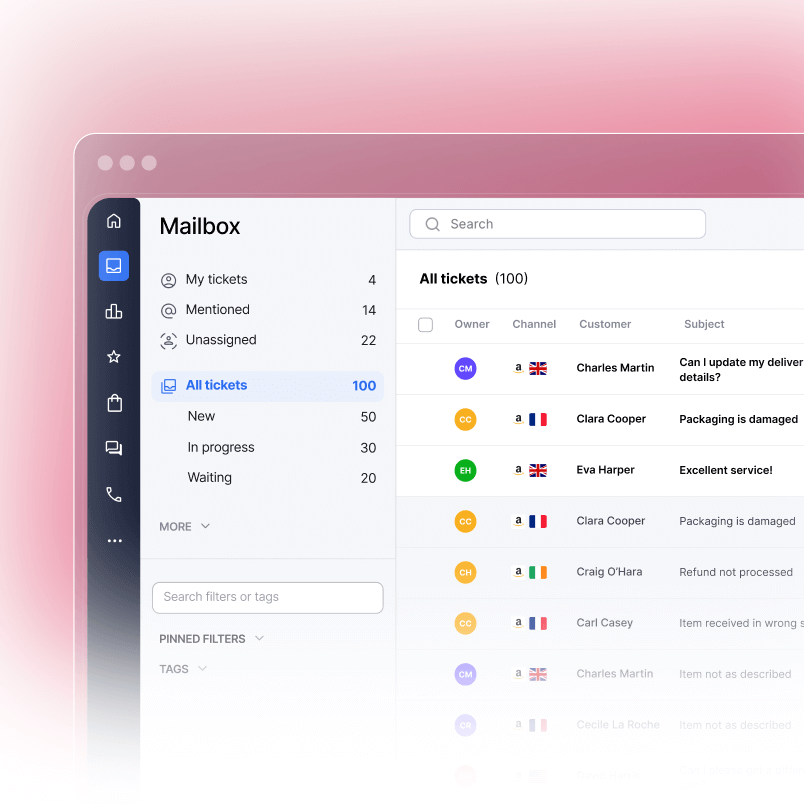Starting an online business in 2025? Learning how to sell on Wish could be your ticket to reaching millions of global customers without the hefty upfront costs associated with traditional eCommerce platforms. While the marketplace has evolved significantly since its peak years, it still offers unique opportunities for sellers willing to navigate its current landscape.
Wish, once the most downloaded shopping app worldwide, has transformed into a more selective platform following its acquisition by Qoo10 in 2024. Though monthly active users have declined from 107 million in 2020 to approximately 12 million in 2023, so it actually presents a less crowded marketplace for new sellers to establish their presence.
What is Wish and why consider it for your business?
Wish operates as a mobile-first marketplace connecting sellers with budget-conscious shoppers across 78 countries. Unlike Amazon, which focuses on fast delivery and premium customer service, Wish specializes in affordable products that typically arrive in 2 weeks or more.
Key Wish statistics for 2025:
- Over 200,000 active merchants on the platform
- Products shipped to consumers in 78+ countries worldwide
- Approximately 680 million registered users globally
- Platform generates around $287 million in annual revenue
The marketplace particularly appeals to younger demographics, including millennials and Gen Z shoppers who prioritize value over speed. According to Statista, mobile commerce is projected to continue growing significantly, making mobile-first platforms like Wish increasingly relevant for reaching these demographics.
Understanding Wish marketplace fees in 2025
One of Wish’s most attractive features remains its seller-friendly fee structure. Unlike many competitors, Wish operates on a “pay only when you sell” model.
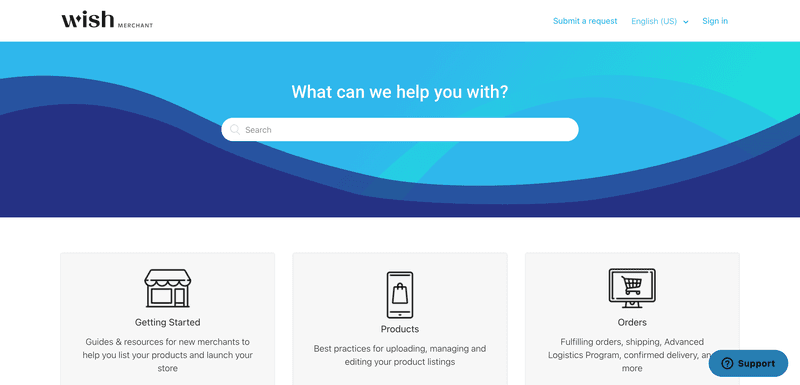
Current Wish Fee Structure:
- No registration fees – completely free to join
- No monthly subscription costs – zero ongoing fees
- No listing fees – list unlimited products for free
- Commission fees: Up to 15% of total order value (including shipping)
- Transaction fee: $0.30 per item per order
- Listing fees (introduced in 2024): Apply only to merchants with excessive listings beyond their free threshold, as detailed in Wish’s official FAQs.
The commission structure uses a progressive model based on item value and destination. Orders shipped within the EU typically have different commission rates than non-EU destinations, with rates ranging from 5% to 25% depending on various factors, including product category and merchant tier status.
Wish seller registration process: getting approved in 2025
Wish seller registration has become more selective since the platform transformed into an invite-only marketplace. Here’s the current process:
Application requirements
- Create your account with a valid email address and phone number
- Complete the detailed questionnaire about your business
- Verify your identity – government-issued ID required
- Provide business documentation if applying as a business entity
- Wait for approval – typically 3-5 business days
Store validation steps
Once approved, you’ll need to validate your store by:
- Selecting your country of domicile
- Verifying your phone number
- Providing your legal business address
- Choosing between individual and business merchant account types
Pro tip: The invitation-only system means less competition, but approval isn’t guaranteed. Focus on presenting a professional business plan and quality product offerings.
Wish product listing tips for maximum success
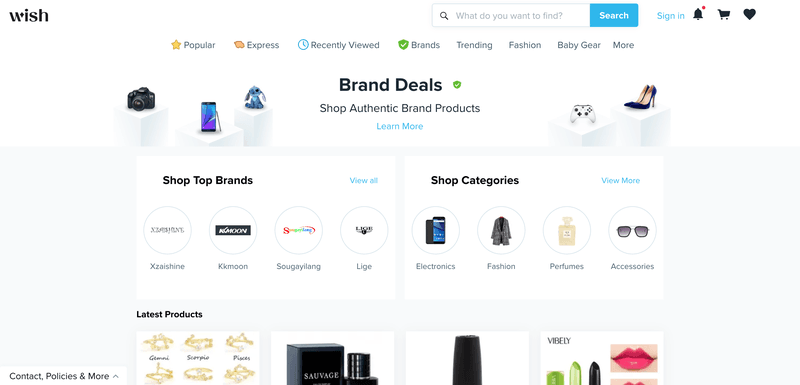
Creating compelling product listings is crucial for success on Wish. The platform’s visual-first approach means your images and descriptions directly impact sales.
Optimizing product images
- Use high-resolution images (minimum 100×100 pixels)
- Shoot against plain white backgrounds
- Include multiple angles and detail shots
- Avoid logos, watermarks, or promotional text
- Use square images for the best mobile display
Writing effective product descriptions
- Focus on key benefits and features
- Use relevant keywords naturally
- Include size, material, and care instructions
- Be honest about quality and shipping times
- Highlight unique selling points
Category selection and product targeting
Wish offers sophisticated targeting options through its product categorization system. Popular categories include:
- Fashion and accessories
- Electronics and gadgets
- Home and garden supplies
- Beauty and personal care
- Sports and outdoor equipment
Assign relevant categories to improve discoverability and reach your ideal customers more effectively.
Setting up Wish shipping settings and fulfillment
Proper shipping configuration is essential for Wish success. The platform offers three main Wish fulfillment options:
Self-fulfillment
- You handle storage, packing, and shipping
- Must fulfill orders within 5 calendar days
- Provide valid tracking information required
- Most cost-effective for new sellers
Wish fulfillment partners
- Third-party logistics providers handle fulfillment
- Integrate through API connections
- Reduces hands-on shipping management
- Higher costs but improved efficiency
Shipping settings configuration
Navigate to Account > Shipping Settings in your merchant dashboard to:
- Select shipping destinations (national or global)
- Set shipping costs for each country
- Configure delivery timeframes
- Enable Wish Express where available
Important: Late shipments result in automatic refunds and can damage your seller standing.
Wish vs Amazon/eBay: how they compare
Understanding how Wish differs from other major marketplaces helps set realistic expectations:
Wish vs Amazon:
- Wish: Lower-priced products, longer shipping times, mobile-first experience
- Amazon: Premium products, fast delivery, desktop and mobile optimization
- Wish fees are generally lower than Amazon’s referral fees
- Amazon offers more robust seller support and logistics
Wish vs eBay:
- Both offer auction and fixed-price formats
- eBay has stronger buyer protection policies
- Wish focuses more on new products vs eBay’s used item marketplace
- Similar fee structures, but Wish has no listing fees
Choose Wish if you’re targeting budget-conscious customers and can wait for slower but cost-effective growth.
Essential Wish seller support resources
Success on Wish requires leveraging available support tools and resources:
Built-in analytics and tools
- Merchant dashboard for tracking sales and performance
- ProductBoost advertising platform for promoted listings
- Wish Standards program for performance-based benefits
- Customer feedback and review management
Third-party solutions
Consider integrating a Wish helpdesk to streamline customer service management. Professional customer service tools help you:
- Manage customer inquiries efficiently
- Track order status and shipping updates
- Handle returns and refunds professionally
- Maintain positive seller ratings
eCommerce product sourcing for Wish success
Finding the right products to sell on Wish requires understanding the platform’s buyer preferences:
Ideal product characteristics
- Low to moderate price points ($1-$50)
- Lightweight for cost-effective shipping
- Trending or unique items
- Good profit margins despite low prices
- Products that photograph well
Sourcing strategies
- Work directly with manufacturers
- Use wholesale directories and trade shows
- Consider private label opportunities
- Test products in small quantities first
- Focus on quality despite low prices
Remember: Wish prohibits counterfeit products, alcohol, firearms, tobacco, and items with nudity. Ensure all products comply with platform policies.
Implementing multichannel selling strategies
Wish works best as part of a broader multichannel selling approach rather than your sole sales channel. Benefits of multichannel selling include:
- Diversified revenue streams
- Reduced dependency on single platforms
- Broader customer reach
- Risk mitigation against platform changes
Popular channels to combine with Wish include:
- Your own eCommerce website
- Amazon and eBay marketplaces
- Social media selling (Facebook, Instagram)
- Etsy for handmade or vintage items
This strategy helps you grow your eCommerce business while building a sustainable, platform-independent brand.
Customer service for online sellers: best practices
Excellent customer service remains crucial even on budget-focused platforms like Wish. Key strategies include:
Response time management
- Respond to inquiries within 24 hours
- Set up automated responses for common questions
- Use templates for efficiency while maintaining personalization
Handling common issues
- Shipping delays and tracking questions
- Product quality concerns
- Return and refund requests
- Size and compatibility questions
Building long-term relationships
- Follow up after purchases
- Offer loyalty rewards for repeat customers
- Request honest reviews and feedback
- Address negative feedback professionally
Professional customer service differentiates successful Wish sellers from those who struggle to maintain good ratings.
Tips for long-term success on Wish
Building a sustainable Wish business requires strategic planning and consistent execution:
Focus on quality over quantity
- Curate your product selection carefully
- Maintain high-quality standards despite low prices
- Remove underperforming listings regularly
- Invest in product photography and descriptions
Monitor performance metrics
- Track your Wish Standards tier status
- Monitor customer satisfaction scores
- Analyze sales data and trends
- Adjust pricing and inventory based on performance
Stay updated with platform changes
- Follow Wish merchant communications
- Participate in seller forums and communities
- Adapt to new features and requirements
- Plan for seasonal trends and promotions
Is selling on Wish worth it in 2025?
Despite challenges and reduced user numbers, Wish still offers opportunities for the right sellers. The platform works best for entrepreneurs who:
- Can source quality products at very low costs
- Target price-sensitive customer segments
- Don’t mind longer shipping times
- Want to test products before scaling to larger platforms
- Prefer minimal upfront investment
However, Wish may not be suitable if you:
- Sell premium or high-ticket items
- Require fast shipping capabilities
- Need extensive seller support resources
- Can’t maintain low price points profitably
Getting started: your next steps
Ready to start selling on Wish? Follow this action plan:
- Research your product niche and verify demand on Wish
- Prepare your business documentation for the application process
- Source 5-10 test products to start with
- Complete the Wish seller registration questionnaire
- Set up your Wish helpdesk for customer service
- Create compelling product listings with professional photos
- Configure shipping settings for your target markets
- Launch with a small inventory and scale based on results
Conclusion
Selling on Wish in 2025 requires adapting to a changed marketplace landscape. While the platform no longer enjoys the explosive growth of its early years, it still provides valuable opportunities for sellers who understand its current positioning.
The key to success lies in realistic expectations, quality products at competitive prices, and excellent customer service. By focusing on these fundamentals and treating Wish as part of a broader multichannel strategy, you can build a profitable presence on this unique marketplace.
Remember that Wish works best for sellers targeting budget-conscious customers who prioritize value over speed. If that aligns with your business model and target market, Wish could be an excellent addition to your selling strategy in 2025.
